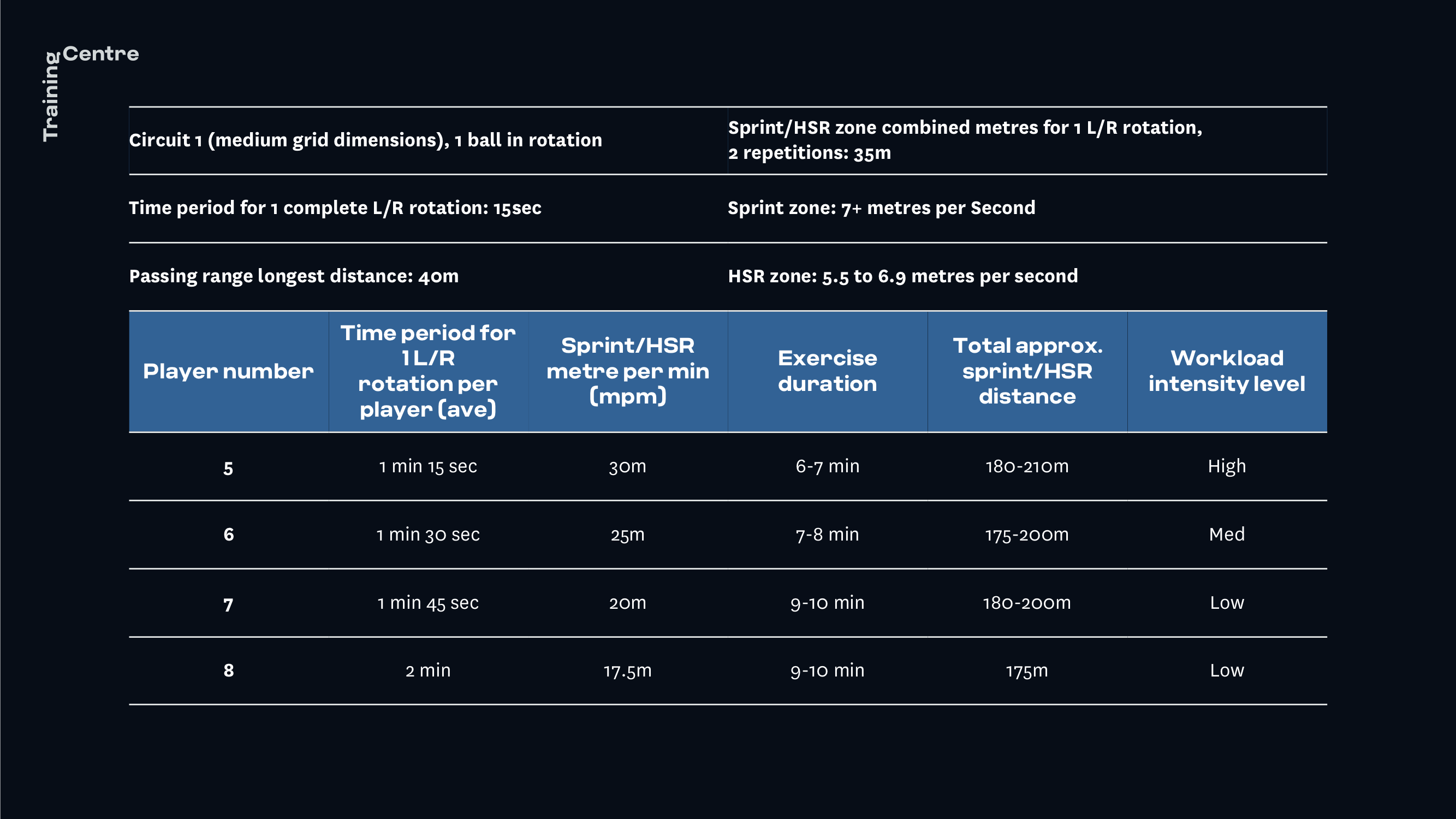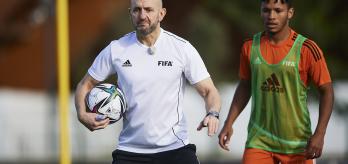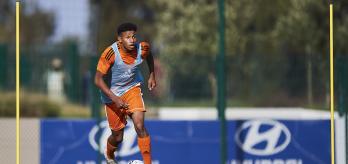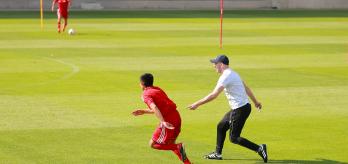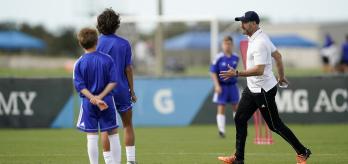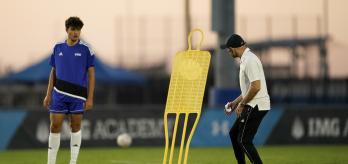The exercises simulate the functional movement scenarios encountered in various attacking moves, and challenge players’ technical skills while operating at a high tempo. One of the key functional aspects in the exercises relates to the cohesion between technique and tempo, which is targeted by a combination of timing and speed of movement with the timing and quality of the pass. The speed technical coordination exercises place a particular focus on the third player involved in the sequence, who makes a run in behind. In this scenario, runs from deep areas replicate breaking through lines, while runs higher up the pitch simulate the player powering in behind. The penetrating accelerations replicate various angles of movement, including vertical and wide curved runs and those that see players move infield from wide areas. Another focus area in some of the exercises is running at speed with the ball under close control. In addition, efficiency of movement, the technical balance of two-footedness, and good footballing habits are all priorities in each exercise.
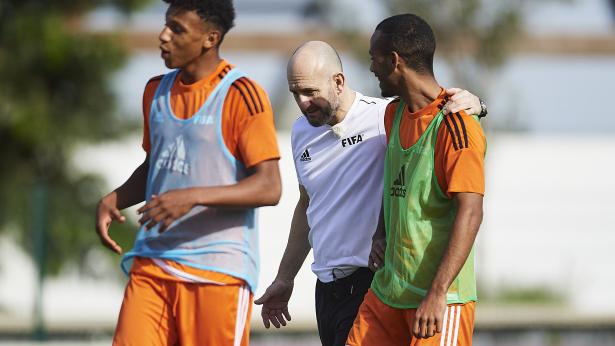
Circuit 1 features three grid sizes (small, medium and large) that reflect the high-speed running (HSR) and sprint distances and the passing ranges involved in the exercises. The circuit can be performed using one ball in rotation amongst a minimum of five players and a maximum of eight players, or two balls for between ten and 16 players. The fewer the players involved, the greater the overall workload intensity.
For the purposes of this article, we have selected four exercises from circuit 1 of speed technical coordination. These drills are performed on a medium-size grid with one ball and feature an average of 20m per repetition in the high-speed zones. A table outlining the speed metrics and workload intensity is included at the bottom of each exercise session plan. The table provides approximate information regarding the distance covered in high-speed zones and the intensity of the drills relative to the player numbers.
Set-up for all drills
.jpg)
Organisation
- Lay out a 50x30m grid using 4 flat white discs or cones (a and b).
- Mark out a 30x30m area on the inside of the grid using 4 poles or mannequins (c and d).
- From the midpoint of the grid, create three 3m gates using poles or mannequins. Position the outer gates 40m apart (e) and place the outer and middle gates 20m apart (f).
- Set up two 3m starting gates (using flat white discs or cones) and position them 5m behind the pole gates (g).
- Position 2 poles 40m apart across the midpoint of the width of the grid (h).
- If no mannequins are available, a mixture of cones/discs or poles may be used instead.
Drill duration
- 5 players: 6-7 minutes
- 6 players: 7-8 minutes
- 7 players: 8-9 minutes
- 8 players: 9-10 minutes
Approximate workload intensity
- 5 players: high
- 6 players: medium
- 7 players: medium to low
- 8 players: low
Coaching points that apply to all drills
- Allow players 1 minute to find their tempo and familiarise themselves with the scenario, before gradually raising the tempo and intensity.
- Devote a period of time (minimum of 4 minutes) during each drill to focus on high tempo, correct technique, technical balance (two-footedness) and the reinforcement of awareness habits.
- Encourage players to move quickly between positions.
Drill 1: one-two before playing the runner in behind
.jpg)
-
A nudges the ball through the gate to play a straight pass towards B.
-
B lays an angled return ball to A, who strokes a diagonal pass to meet C's in-behind acceleration.
-
C plays a cross-field pass into the forward movement of A', who is positioned at the opposite end of the grid.
-
The rotational sequence continues from the opposite starting position.
-
Every player follows their pass so as to ensure rotation.
-
A moves to B.
-
B moves to C.
-
C moves to A'.
-
Place the emphasis on playing a quality pass into the path of the next player in the sequence.
-
This drill promotes technical balance, requiring the use of the left and right foot in equal measure.
-
In terms of the focus on coordination/cohesion, A should step in to meet the ball, powering forward between the poles, before playing a second-touch pass to B.
-
To promote technical balance, when playing a left or right diagonal pass, A should meet the ball with whichever foot is most appropriate to lay it into C's acceleration path. However, if possible, A should use a variety of left- and right-footed passing.
-
To encourage technical balance, when playing the ball across the field to the left, C should meet the ball with a first-time, right-footed pass into the forward path of the next player to occupy the role of A' in the sequence. When playing the ball across the field to the right, Player 3 should play a first-time, left-footed pass.
-
To reinforce good awareness habits, C should scan infield to allow them to time a full-power acceleration into the area beyond the pole to meet A's pass.
-
C: each individual acceleration should cover a distance of approximately 20m in the sprint/high-speed running (HSR) zones.
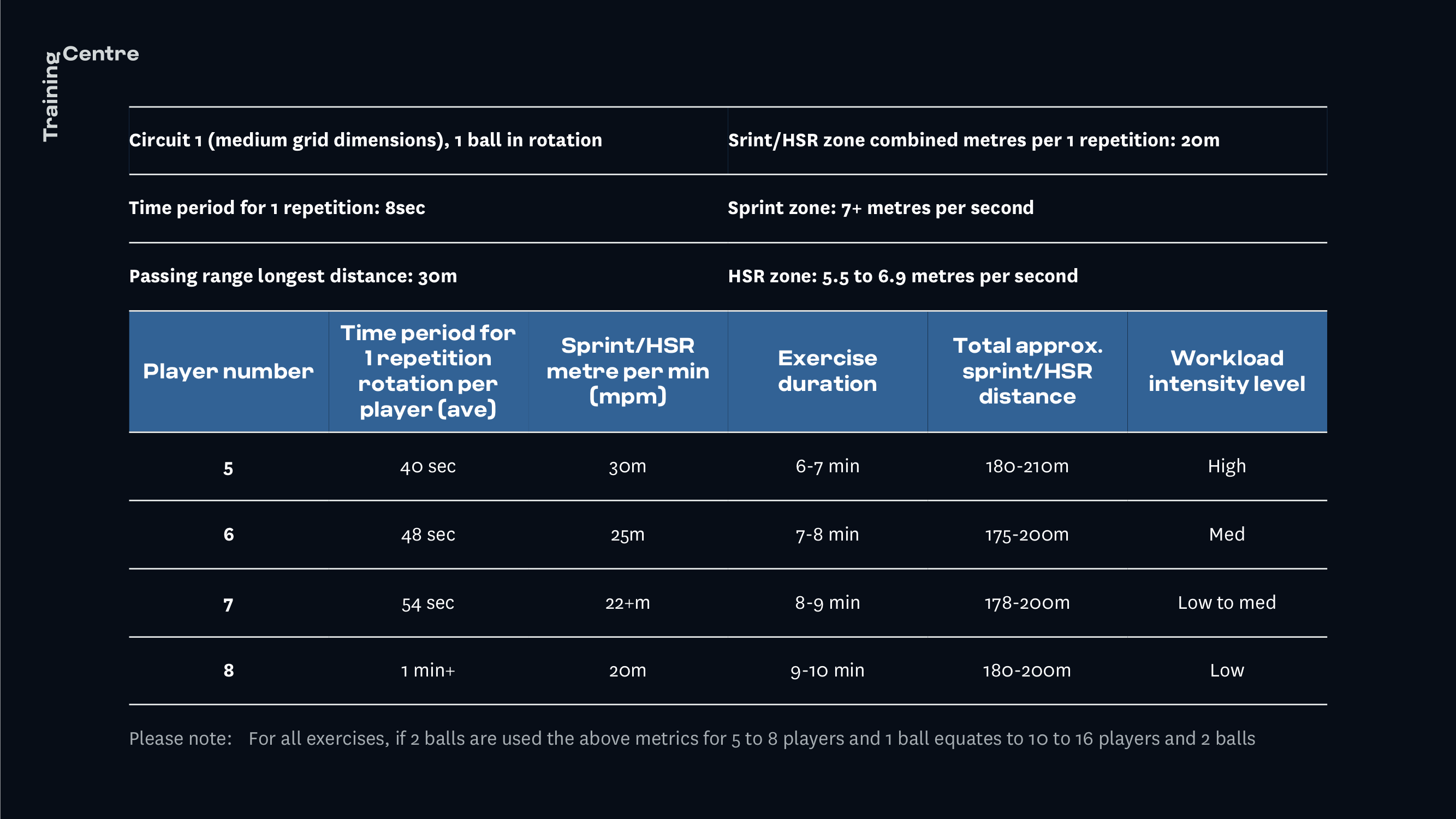
Drill 2: turn out to switch play, turn inside to play to the runner in behind
.jpg)
-
From their position at the starting gate, marked by two flat white discs, A turns out to play a diagonal pass towards B, who is positioned at the first wide pole.
-
B drives infield before playing a diagonal cross-field pass to meet C’s acceleration path.
-
C accelerates infield and in behind the circuit midline to meet the ball, before playing a pass to the player positioned at the opposite starting position.
-
The rotational sequence continues from the opposite starting position.
-
Every player follows their pass to ensure player rotation.
-
A moves to B.
-
B moves to C.
-
C moves to A’.
-
Place the emphasis on playing a quality pass into the path of the next player in the sequence.
-
This drill promotes technical balance, requiring the use of the left and right foot in equal measure.
-
To promote technical balance, when starting the sequence with a diagonal right pass, Player A should place the emphasis on their right foot. The opposite applies when starting the rotation with a diagonal left pass, with greater emphasis to be placed on the left foot.
-
To encourage technical balance, when driving infield to play the in-behind pass towards the left, B should play a left-footed pass.
-
The opposite applies when the player drives infield to play the in-behind pass towards the right, with a right-footed pass required in this instance.
-
In the interests of technical balance, when playing the forward pass towards the right, C should play a left-footed pass towards the left of A'. The opposite applies when playing the forward pass towards the left, with a right-footed pass played to the right of A' required.
-
To reinforce good awareness habits, C should scan infield to time a full-power acceleration to meet B's pass.
-
C: each individual acceleration should cover a distance of approximately 20m in the sprint/HSR zones.
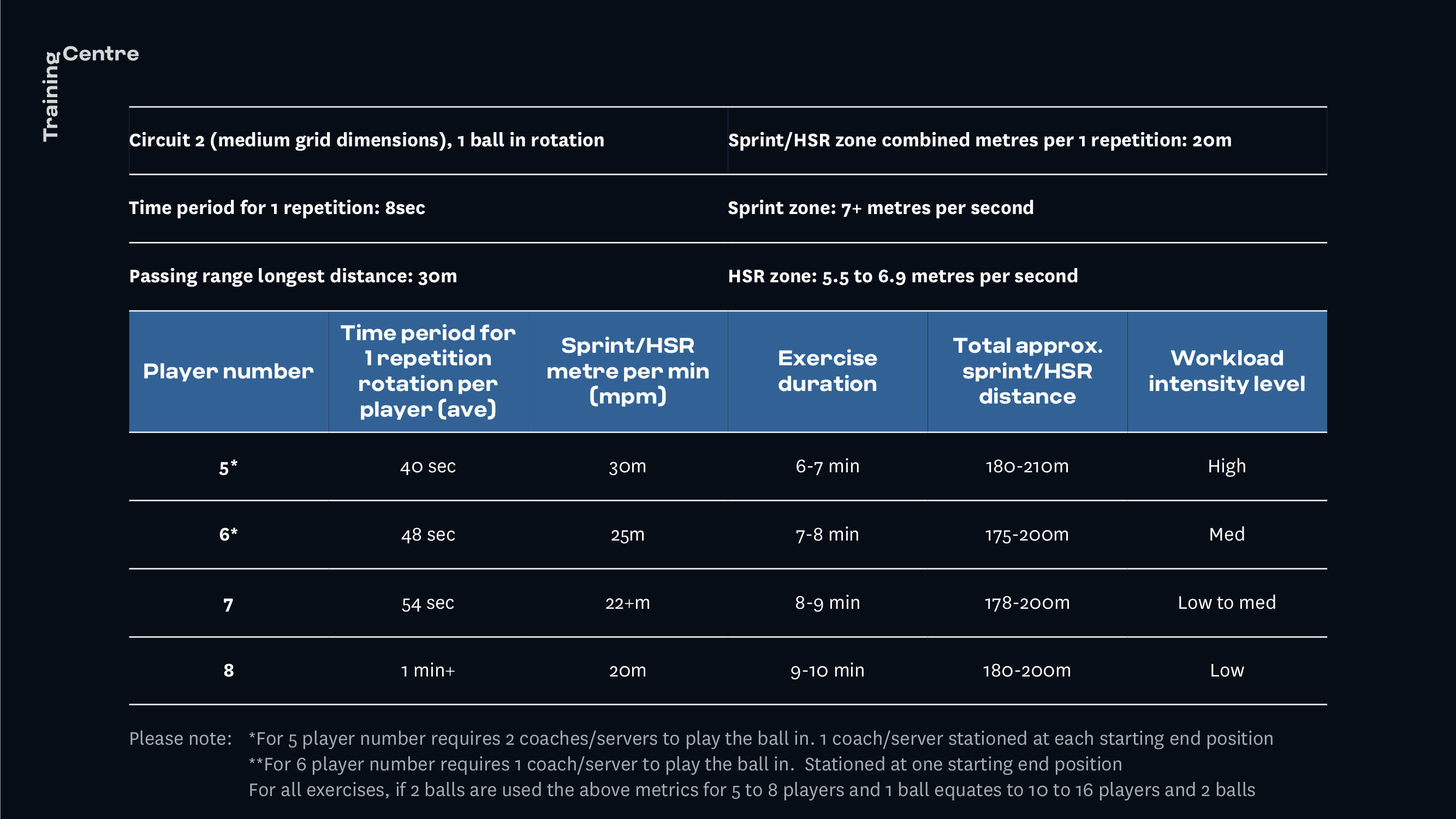
Drill 3: horizontal across the line, to vertical in behind
.jpg)
-
A, situated at the starting corner position, plays a horizontal pass towards Player 2 and into the space between the pole gate and the flat white discs.
-
B advances quickly through the gate to receive the ball on the half-turn forward, before immediately turning out to play a vertical pass into Player 3's infield acceleration path.
-
C continues to accelerate with the ball at their feet, before playing a diagonal pass out to A, who is positioned in the opposite corner.
-
The rotational sequence continues from the opposite starting corner.
-
Every player follows their pass to ensure player rotation.
-
A moves to B.
-
B moves to C.
-
C moves to A'.
-
Place the emphasis on playing a quality pass into the path of the next player in the sequence.
-
This drill promotes technical balance, requiring the use of the left and right foot in equal measure.
-
To encourage technical balance, when playing the ball from left to right, B should allow the ball to run across the poles, nudging it forward with their right foot, before playing a right-footed vertical pass towards C.
-
The opposite applies when playing from right to left, with the emphasis to be placed on the left foot.
-
To reinforce good footballing awareness habits, B should scan towards C before receiving the ball from A.
-
In terms of the focus on coordination/cohesion, C should accelerate 10-15m with the ball under close control, before playing a well-weighted pass towards the opposite starting corner.
-
To reinforce good footballing awareness habits, C should scan infield towards B to time their acceleration in line with B's involvement in the sequence.
-
C: each individual acceleration (both on and off the ball) should cover a distance of approximately 20m in the sprint/HSR zones.
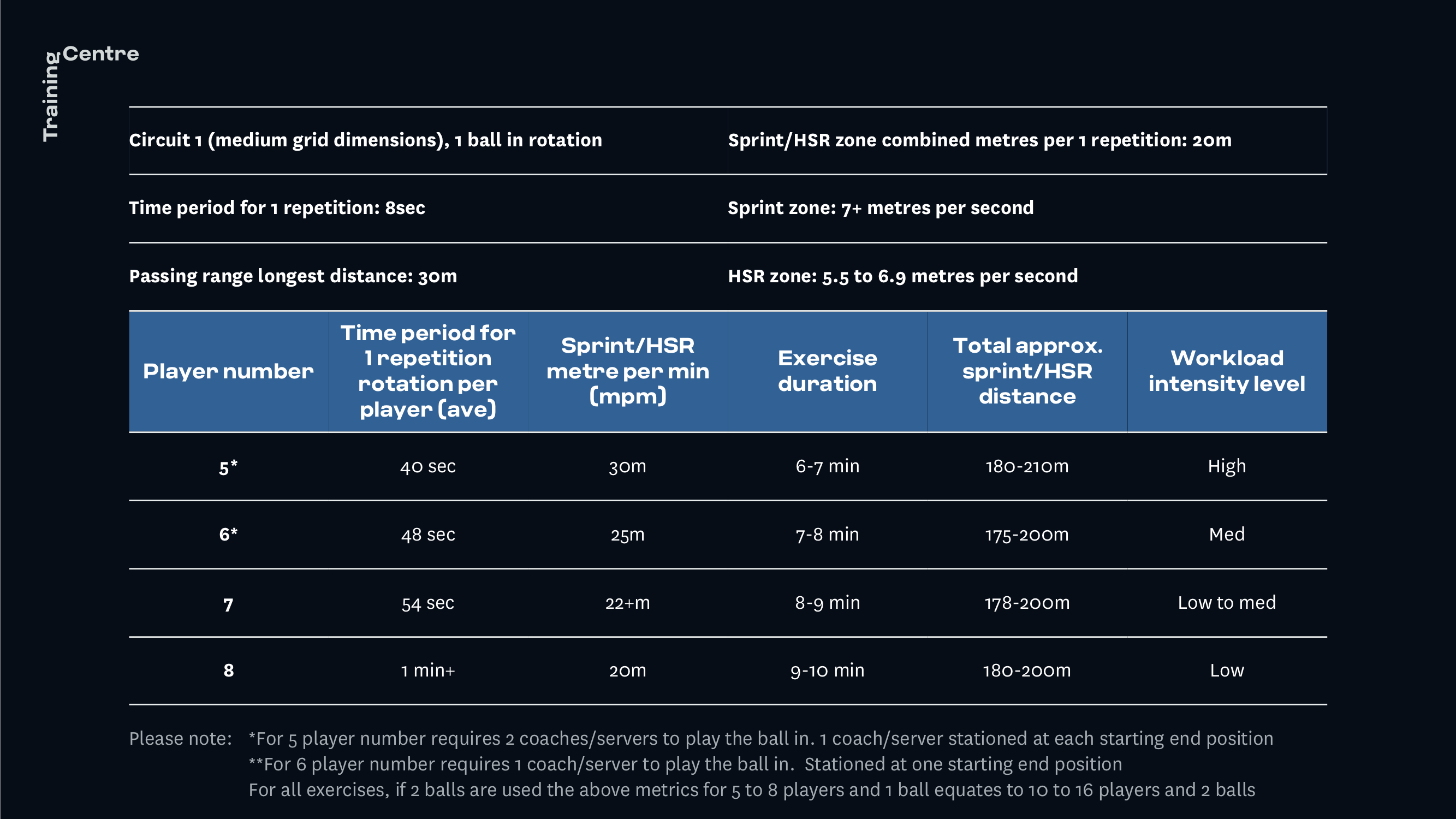
Drill 4: step in to play the runner in behind, before switching play
.jpg)
-
A, who is situated at the starting position (marked out by two flat white discs), drives forward between the poles with the ball at their feet, before playing a long diagonal pass into B's acceleration path.
-
B meets the ball with a first-time pass into C's forward run.
-
C switches the play out wide with a diagonal pass towards the centre pole and into Player D’s feet.
-
D turns forward on their first touch and accelerates with the ball, driving infield before playing a diagonal pass to the next player to occupy the role of A in the sequence, and the rotation is repeated from the starting position.
-
Every player follows their pass to ensure player rotation.
-
A moves to B.
-
B moves to C.
-
C moves to D.
-
Place the emphasis on playing a quality pass into the path of the next player in the sequence.
-
NB: to promote complete technical balance, two sets of this drill are required: set one should be a clockwise rotation and set two an anticlockwise rotation.
-
In terms of the focus on coordination/cohesion, A should step into D's pass and power forward with their first touch.
-
To promote technical balance, when playing a long diagonal pass in both clockwise and anticlockwise rotations, A should use whichever foot is most appropriate to pick out B's acceleration. However, to promote technical balance, A should try to avoid using only their dominant foot.
-
To encourage technical balance, in the anticlockwise rotation, B should play a first-time, right-footed pass when playing the left diagonal pass into C. The opposite applies for the clockwise rotation, where the right diagonal pass should involve a first-time, left-footed pass.
-
To reinforce good footballing awareness habits, B should scan infield to time their run and assess the placement of A's pass.
-
To promote technical balance, in the anticlockwise rotation, when turning to the right, C should stroke the ball out with their right foot towards D's feet. The opposite applies in the clockwise rotation, with C turning to the left to play a left-footed pass.
-
To encourage technical balance, during the anticlockwise rotation, after powering forward with the ball at their feet, D should play the left diagonal pass with their right foot. The opposite applies for the clockwise rotation, with the right diagonal pass to involve a left-footed pass.
-
B: each individual acceleration off the ball should cover a distance of approximately 20m in the sprint or HSR zones.
-
D: each individual acceleration on the ball should cover a distance of approximately 15m in the sprint or HSR zones.
-
For each full rotation, all players should cover a total distance of approximately 35m in the sprint or HSR zones.
